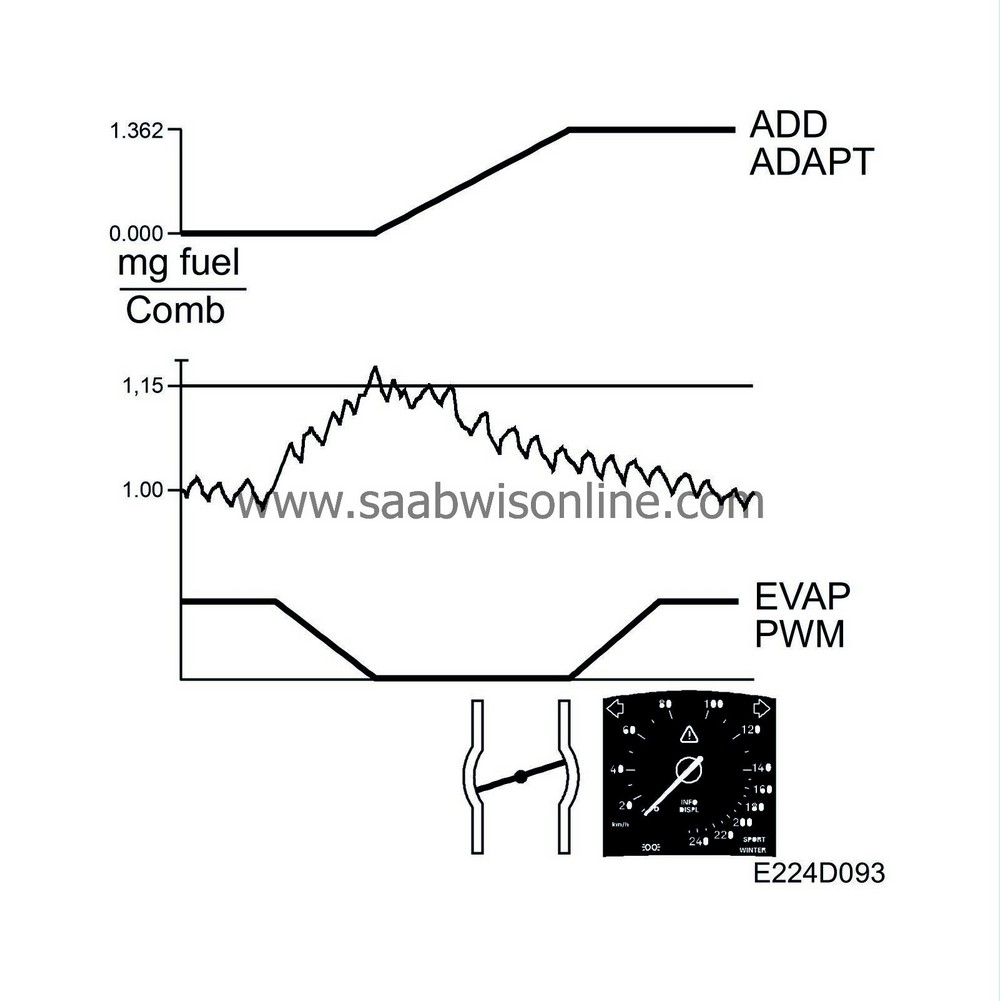Additive adaptation.
| Additive adaptation. |
Fuel is added or subtracted until the closed loop value fluctuates round 1.00 (0%). Additive adaptation is necessary because air leakage at idling speed leads to a major fault which cannot be adapted multiplicatively as the quantity of fuel would then become much too large as soon as an increase in load occurred.
The limits for additive adaptation are minus 10 and 10 mg fuel/combustion.
After the engine has started, multiplicative adaptation must always take place before additive adaptati on.
The following conditions must be fulfilled before additive adaptation can take place:
| • |
The closed loop system must be active.
|
|
| • |
No purging may occur; this takes place for 4 minutes and 30 seconds every 5-minute period.
|
|
| • |
Engine coolant temperature must exceed 75°C.
|
|
| • |
Engine speed must be 750-950 rpm.
|
|
| • |
The load must correspond to 90-200 mg/c.
|
|
| • |
The car must be stationary.
|
|
| Diagnostics |

| • |
When the additive value reaches 10 mg fuel/combustion, diagnostic trouble code P1181 will be generated.
The most probable cause of the fault is: |
|
| - |
Air leakage after the throttle.
|
| - |
Low fuel pressure.
|
| • |
When the additive value reaches minus 10 mg fuel/combustion, diagnostic trouble code P1182 will be generated.
The most probable cause of the fault is: |
|
| - |
The purge valve has jammed in the open position.
|
| - |
Air leakage before the throttle.
|



